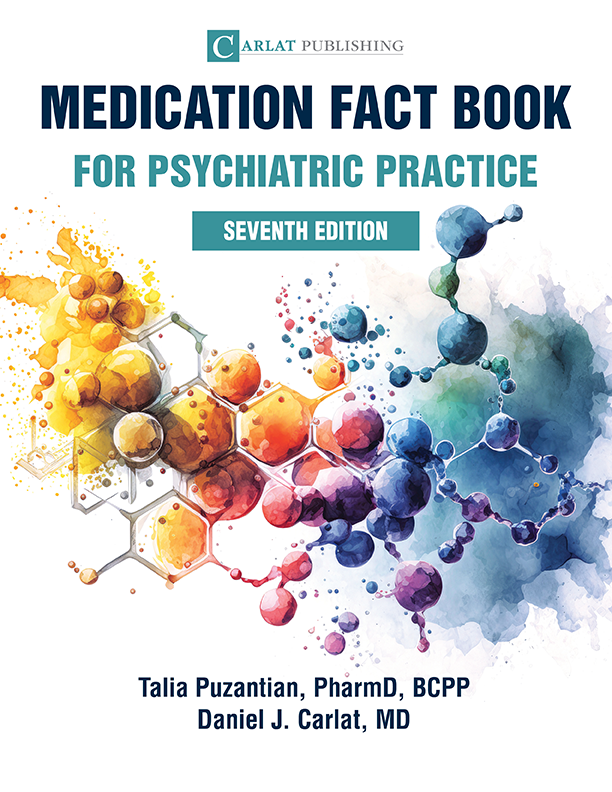Home » Meds for ADHD: An Update
Meds for ADHD: An Update
January 1, 2010
From The Carlat Psychiatry Report
Heidi W. Ashih, MD, PhD
With the many medication options available for ADHD, it can certainly be confusing deciding which to choose. Typically, the medication of first choice is one of the stimulants, as they are more consistently effective than the non-stimulants.
Exceptions to this rule would include patients with any of the following:
If you choose to start with a stimulant, many clinicians pick a long-acting formulation for patient convenience. These include methylphenidates (Concerta, Ritalin LA, Metadate CD, Focalin XR) or amphetamines (Dexadrine SR, Adderall XR, Vyvanse). Other psychiatrists start with short-acting stimulants, for a number of reasons: first, they are cheaper and are covered by insurance; second, by virtue of being short-acting, they can be titrated more aggressively and in more of a fine-tuned manner; and third, you can always transition patients to long-acting formulations once you’ve arrived at the right dose.
Amphetamines are thought by some to be more rapidly effective than methylphenidates (MPH), but at the expense of more side effects, such as irritability and insomnia. This is all anecdotal evidence however, since there are very few head-to-head studies comparing stimulants.
The stimulant Vyvanse (lisdexamfetamine) merits special mention, because, while it is relatively new, it has been around for three years—long enough to allow some clinical experience. It appears that Vyvanse represents an incremental, albeit small, advance in long-acting stimulant treatment. It is a pro-drug of dextroamphetamine, and therefore needs to be absorbed in the GI-tract to be converted to its active form. This property theoretically makes it more difficult to abuse via snorting, but it doesn’t prevent it from being abused orally. In fact, at higher doses it will provide speed addicts with plenty of buzz.
Vyvanse has developed the reputation as the longest-acting stimulant on the market, which may be true or may be a reflection of its metabolic consistency (there is evidence of less interpatient variability in its duration of action than other stimulant formulations).
The onset seems smoother as well. In some ways, one can think of Vyvanse as the amphetamine response to the success of Concerta another very long-acting, smooth onset and offset stimulant—but with the potential advantage of being an amphetamine and, therefore, (anecdotally) more potent than MPH preparations.
The non-stimulants sit somewhere between placebo and stimulants in terms of efficacy, explaining why they are usually second-line choices. Nonmedication options, such as behavioral therapy, while not as effective as medication for core ADHD symptoms, are helpful for improving parenting skills and peer relationships, both of which are crucial for children with ADHD (The MTA Cooperative Group, Arch Gen Psychiatry 1999;56: 1073-1086).
For detailed information on all available ADHD medications, see the Official 2010 TCPR ADHD Medication Comparison Chart in this issue.
General PsychiatryExceptions to this rule would include patients with any of the following:
- Contraindications to stimulants: These could include a history of stimulant abuse; cardiac arrhythmia or other significant cardiac problem; or a history of psychiatric adverse events to stimulants, such as anxiety or paranoia.
- Clinical “twofers:” For ADHD + tobacco dependence or depression, try Wellbutrin or desipramine. For ADHD + hyperactivity + hypertension, try guanfacine or Tenex.
If you choose to start with a stimulant, many clinicians pick a long-acting formulation for patient convenience. These include methylphenidates (Concerta, Ritalin LA, Metadate CD, Focalin XR) or amphetamines (Dexadrine SR, Adderall XR, Vyvanse). Other psychiatrists start with short-acting stimulants, for a number of reasons: first, they are cheaper and are covered by insurance; second, by virtue of being short-acting, they can be titrated more aggressively and in more of a fine-tuned manner; and third, you can always transition patients to long-acting formulations once you’ve arrived at the right dose.
Amphetamines are thought by some to be more rapidly effective than methylphenidates (MPH), but at the expense of more side effects, such as irritability and insomnia. This is all anecdotal evidence however, since there are very few head-to-head studies comparing stimulants.
The stimulant Vyvanse (lisdexamfetamine) merits special mention, because, while it is relatively new, it has been around for three years—long enough to allow some clinical experience. It appears that Vyvanse represents an incremental, albeit small, advance in long-acting stimulant treatment. It is a pro-drug of dextroamphetamine, and therefore needs to be absorbed in the GI-tract to be converted to its active form. This property theoretically makes it more difficult to abuse via snorting, but it doesn’t prevent it from being abused orally. In fact, at higher doses it will provide speed addicts with plenty of buzz.
Vyvanse has developed the reputation as the longest-acting stimulant on the market, which may be true or may be a reflection of its metabolic consistency (there is evidence of less interpatient variability in its duration of action than other stimulant formulations).
The onset seems smoother as well. In some ways, one can think of Vyvanse as the amphetamine response to the success of Concerta another very long-acting, smooth onset and offset stimulant—but with the potential advantage of being an amphetamine and, therefore, (anecdotally) more potent than MPH preparations.
The non-stimulants sit somewhere between placebo and stimulants in terms of efficacy, explaining why they are usually second-line choices. Nonmedication options, such as behavioral therapy, while not as effective as medication for core ADHD symptoms, are helpful for improving parenting skills and peer relationships, both of which are crucial for children with ADHD (The MTA Cooperative Group, Arch Gen Psychiatry 1999;56: 1073-1086).
For detailed information on all available ADHD medications, see the Official 2010 TCPR ADHD Medication Comparison Chart in this issue.
Issue Date: January 1, 2010
Table Of Contents
Recommended
Newsletters
Please see our Terms and Conditions, Privacy Policy, Subscription Agreement, Use of Cookies, and Hardware/Software Requirements to view our website.
© 2025 Carlat Publishing, LLC and Affiliates, All Rights Reserved.


_-The-Breakthrough-Antipsychotic-That-Could-Change-Everything.jpg?1729528747)



